Overview
This article outlines essential steps wineries can take to engage their mailing list effectively, underscoring the critical role of direct communication and tailored content in fostering customer loyalty.
By:
- Identifying and segmenting target audiences,
- Crafting engaging content,
- Utilizing appropriate management tools,
- Continuously analyzing performance metrics,
wineries can significantly enhance customer connections and drive sales.
These strategies not only improve engagement but also position wineries to respond adeptly to the evolving needs of their clientele, ultimately leading to sustained success in a competitive market.
Introduction
Building a successful winery mailing list transcends the mere act of collecting emails; it embodies the cultivation of a vibrant community that fosters loyalty and drives sales. Direct communication serves as a crucial lifeline between vineyards and their customers, enabling wineries to leverage this tool for sharing personalized content, exclusive promotions, and updates that resonate with their audience.
Yet, a significant challenge persists: how can wineries effectively segment their audience and craft engaging content that stands out in a saturated marketplace?
This article delves into essential strategies for mastering winery mailing lists, ensuring that every email dispatched not only captures attention but also enhances customer relationships and boosts revenue.
Understand the Importance of a Mailing List for Wineries
A winery mailing list stands as a crucial asset for vineyards, facilitating direct communication with customers and fostering a sense of community. This tool empowers wine producers to share updates, promotions, and personalized content, significantly enhancing customer loyalty. In fact, efficient online communication can account for 20-30% of a vineyard's income, underscoring its importance in driving sales.
By cultivating a robust email database, vineyards gain valuable insights into customer preferences and behaviors, enabling tailored offerings and marketing strategies. For instance, segmenting email groups based on customer interests can enhance engagement and conversion rates, as evidenced by successful case studies where targeted content led to increased sales and loyalty. Enocap's demand generation strategies and wine club optimization can further bolster these initiatives, ensuring that wine producers fully realize their potential.
Moreover, direct communication is particularly vital in the competitive wine industry, where personal connections can translate into long-term customer retention. Wineries that actively engage with their winery mailing list without resorting to aggressive discounts or last-minute promotions. This strategic approach not only enhances brand visibility but also encourages repeat business, making it essential for businesses pursuing sustainable growth.
As one industry expert aptly stated, "That vineyard earns loyalty." and "That winery makes sales." Citing such insights can bolster credibility. Furthermore, employing A/B testing for subject lines and calls to action (CTAs) can further optimize performance, with the average click-through rate in the wine industry standing at 5.08%. Enocap's expertise in brand narrative development and customer retention programs can further amplify the effectiveness of these email outreach efforts.
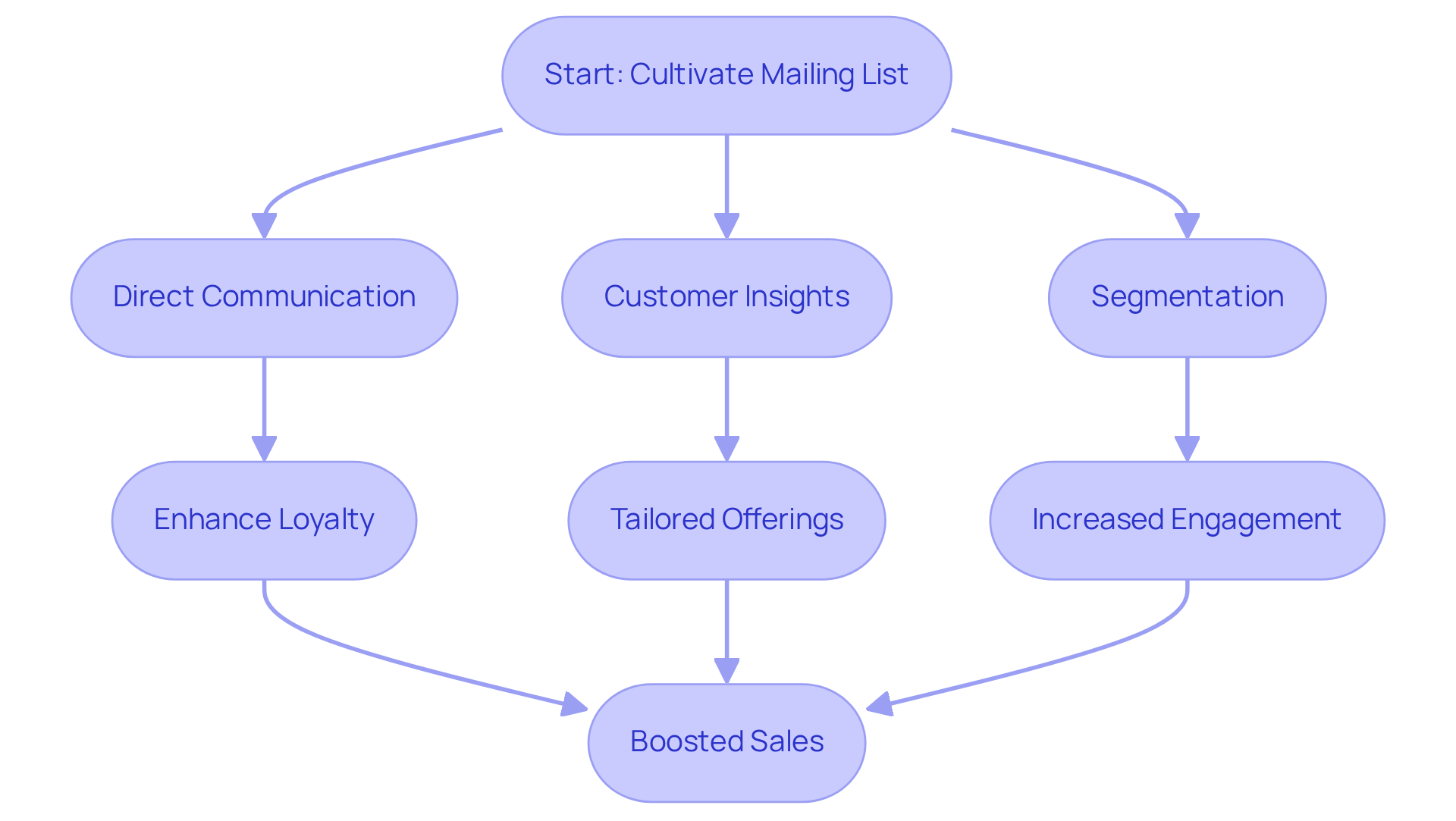
Identify and Segment Your Target Audience
To effectively engage your audience, it is essential to begin by identifying key segments within your mailing list. Consider critical factors such as demographics—age, gender, location—purchase history, and engagement levels. For instance, segmenting your audience into categories like wine club members, occasional buyers, and first-time customers enables tailored messaging and offers that cater to the specific needs and interests of each group. Utilizing surveys or can gather valuable data on your subscribers, ensuring that your marketing efforts resonate with their preferences.
Implementing strategic segmentation is crucial; studies indicate that segmented email campaigns can generate 30-50% higher open rates compared to non-segmented ones. Start with 3-5 major segments to avoid over-segmentation, which can lead to excessive work without meaningful differentiation. For example, new members (0-6 months) may benefit from onboarding and educational content, while established members (7-24 months) should receive exclusive benefits to enhance retention.
Successful vineyards recognize the importance of strategic segmentation and dedicate time to defining it, which can significantly decrease churn and service issues. By monitoring member behavior and preferences, you can automatically update segments based on recent activity, ensuring your communications remain relevant and engaging. This proactive approach not only cultivates loyalty but also establishes your establishment as a trusted authority in the industry. As Ben Salisbury notes, "Content that is tailored for each categorized group will increase engagement and conversion rates," ultimately driving predictable direct-to-consumer revenue. Furthermore, integrating storytelling into your messaging can enhance emotional connections with your audience, while strategic capital planning ensures that your marketing efforts are supported by the necessary resources for sustained growth.
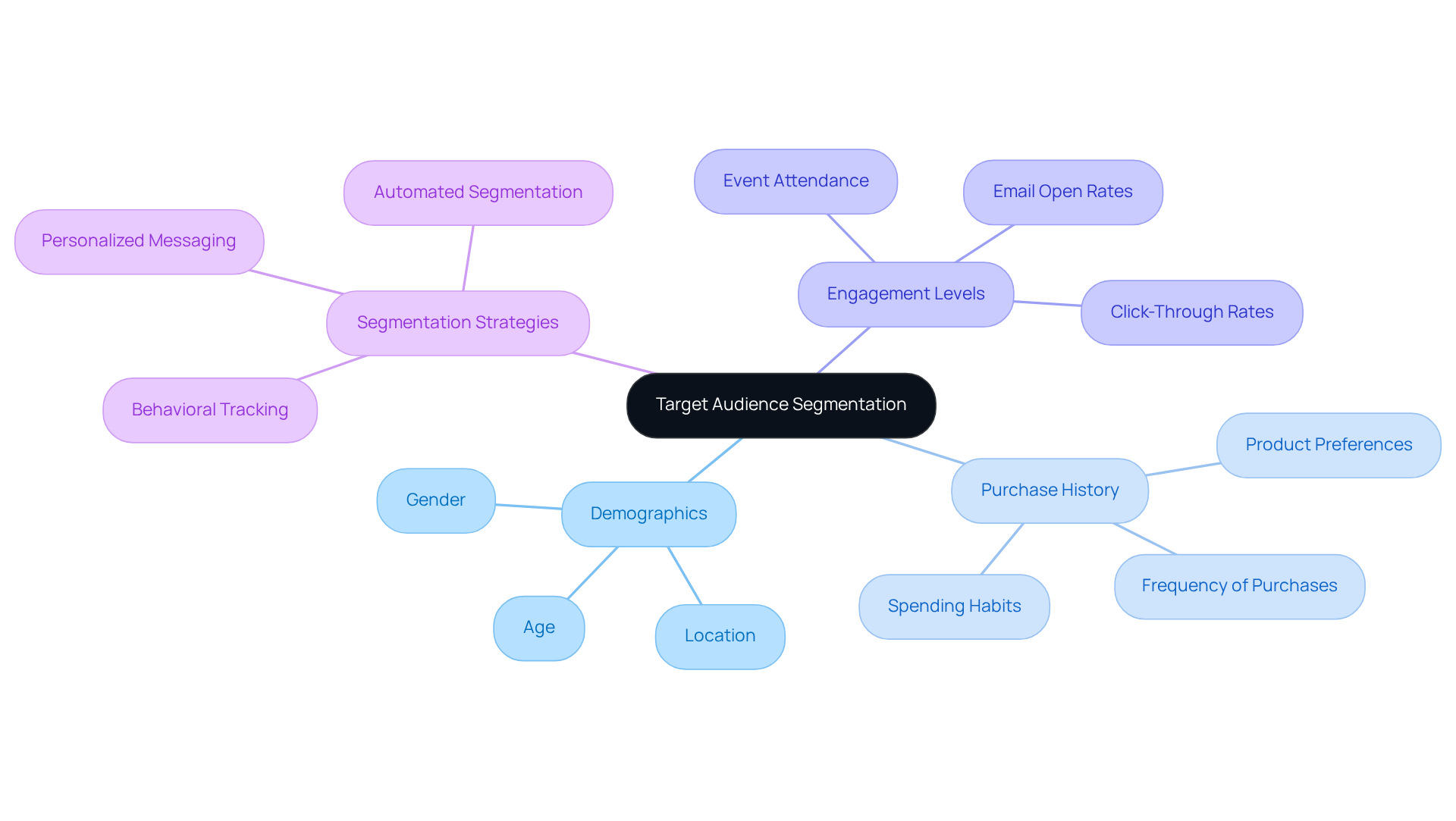
Craft Engaging Content for Your Mailing List
Engaging content serves as the cornerstone of a successful winery mailing list. Begin by sharing captivating stories about your establishment, including the winemaking process, vineyard updates, and staff highlights. Enhance your messages with visually appealing elements such as high-quality images and videos. Exclusive promotions, educational content on wine pairings, and invitations to special events further amplify engagement.
Personalization is essential; addressing recipients by name and tailoring content to their preferences cultivates a more intimate connection. Regularly analyze engagement metrics—such as open rates, which average 31.3% in the wine industry—to identify which content resonates most with your audience. This ongoing refinement will and strengthen customer loyalty over time.
Effective email campaigns frequently weave narratives that resonate emotionally with subscribers, allowing them to feel involved in your vineyard's journey. For instance, sharing behind-the-scenes insights or highlighting unique aspects of your wines can create a lasting impression. By implementing these strategies, establishments can cultivate robust relationships with their audience and drive sales through their winery mailing list.
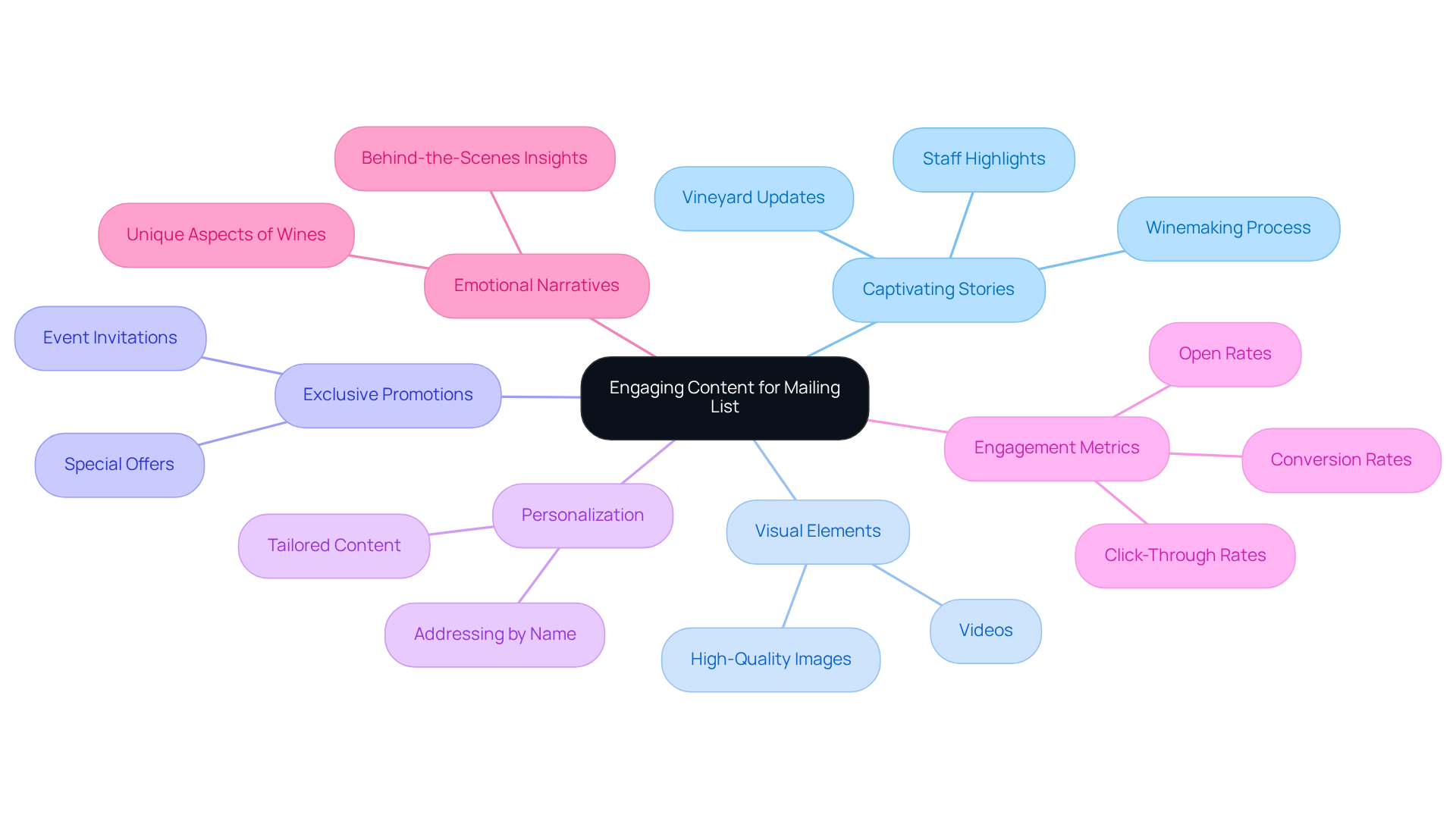
Select Appropriate Tools for Mailing List Management
Selecting the appropriate mailing management tools is crucial for enhancing your vineyard's marketing approach. Platforms such as Mailchimp, Constant Contact, and WineDirect stand out for their robust features, including automation, segmentation, and detailed analytics. These tools empower you to create visually attractive messages, efficiently manage subscriber lists, and effectively monitor engagement metrics.
When choosing a platform, prioritize features that enable with your establishment's website and e-commerce systems, ensuring a smooth user experience. As Deksia Jones highlights, "A winery that understands its customers doesn’t need to discount aggressively or pursue sales with last-minute promotions," underscoring the significance of knowing your audience through effective communication.
Compliance with data protection regulations is paramount; failing to do so can result in penalties of up to $10 million per violation, as noted by Devin Long. This not only safeguards your subscribers' information but also builds trust in your brand. By utilizing these tools, you can enhance your communication efforts, boosting engagement and nurturing enduring connections with your customers.
Moreover, ongoing performance tracking is vital for optimizing your strategies. Regularly assess your email campaigns to ensure they meet your goals and adapt as necessary. By taking these steps, you can guarantee that your mailing management tools effectively support your winery's marketing objectives.
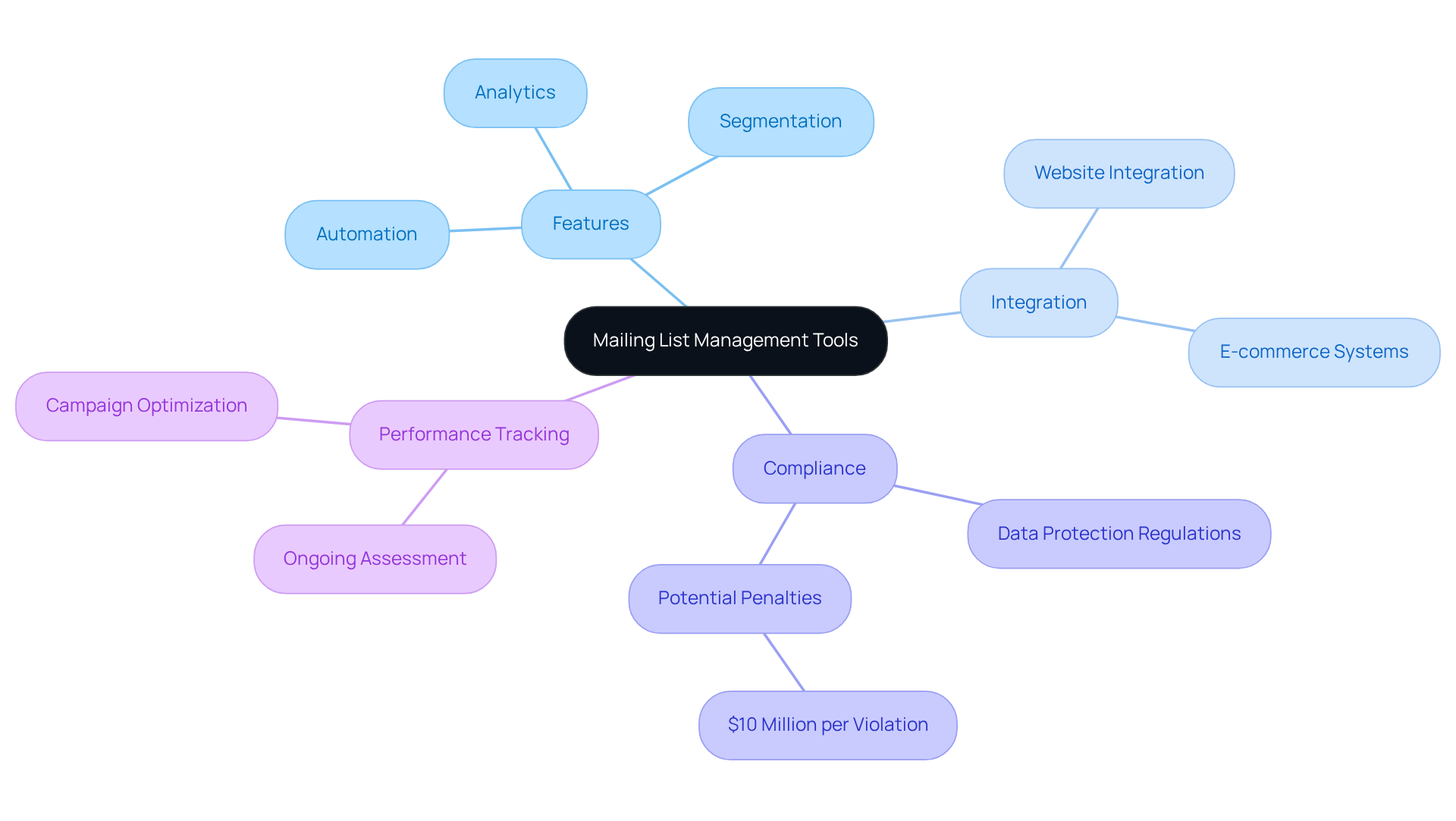
Analyze and Optimize Your Mailing List Performance
To maintain the effectiveness of your mailing list, it is crucial to regularly analyze its performance through key metrics such as:
- Open rates
- Click-through rates
- Conversion rates
Tools like Google Analytics provide invaluable insights into with your messages. By identifying trends and patterns in this engagement, you can discern what content resonates most with your audience. This analysis serves as the foundation for optimizing your campaigns—adjusting subject lines, content types, and sending times accordingly. Continuous improvement is not just beneficial; it is essential. By testing different strategies and learning from the results, you can significantly enhance your overall email marketing effectiveness.
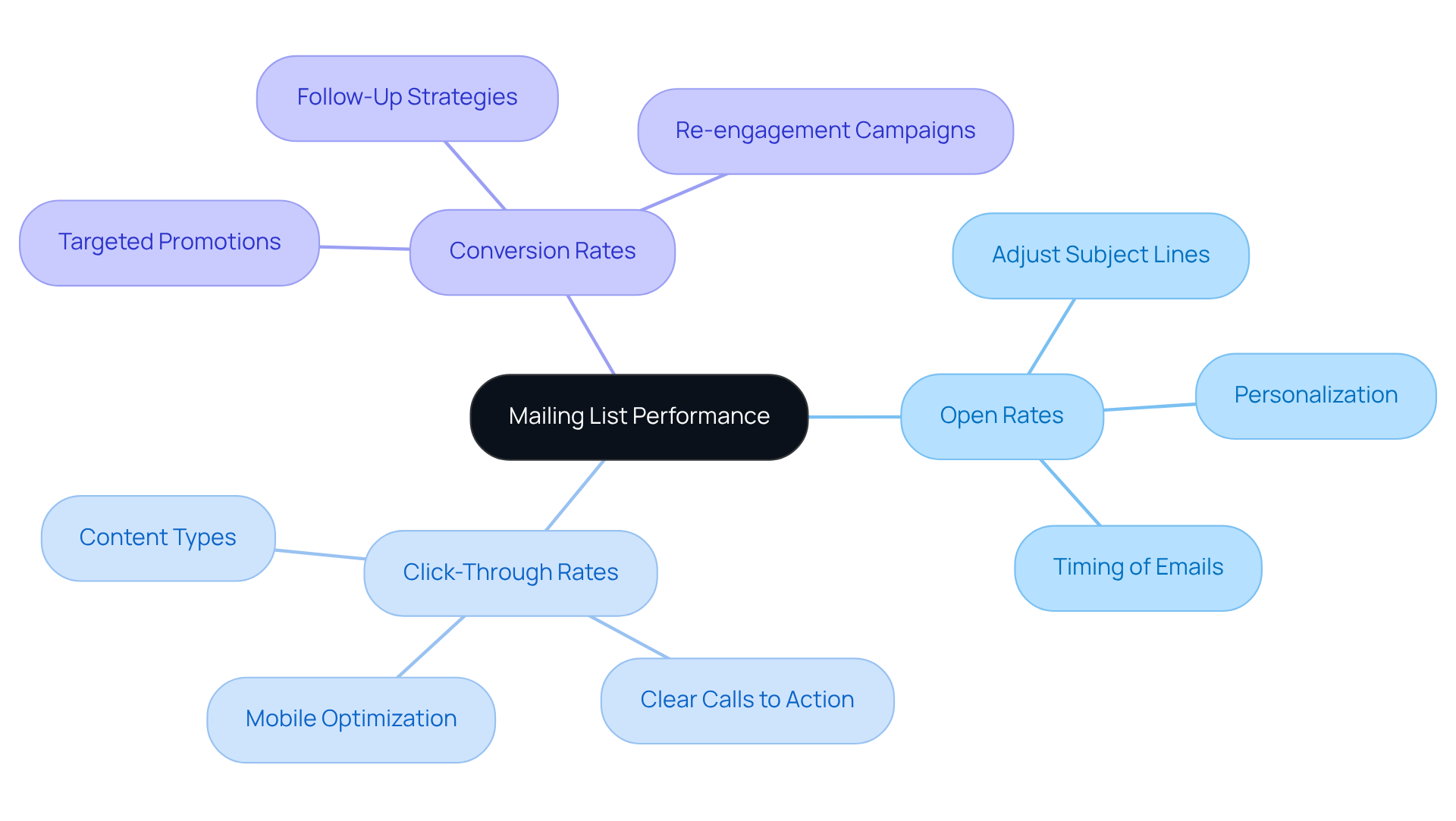
Conclusion
Building and managing a winery mailing list transcends mere marketing tactics; it stands as an essential strategy for cultivating enduring relationships with customers and driving sales. By effectively harnessing this powerful tool, wineries can engage directly with their audience, share compelling content, and foster a sense of community that significantly enhances customer loyalty.
Key strategies include:
- Recognizing the critical importance of a mailing list
- Identifying and segmenting the target audience
- Crafting engaging content
- Selecting suitable management tools
- Continuously analyzing performance metrics
Each of these elements plays a vital role in optimizing the mailing list's effectiveness, ensuring that communications are not only relevant but resonate profoundly with subscribers. The impact of tailored messaging and strategic engagement is profound, as they contribute significantly to increased open rates and conversions.
Ultimately, the success of a winery's marketing efforts hinges on the ability to connect with customers in meaningful ways. By leveraging the insights and strategies outlined, wineries can transform their mailing lists into formidable assets that drive growth and enhance customer satisfaction. Embracing these practices not only amplifies brand visibility but also cultivates a loyal customer base, making it imperative for wineries to prioritize their mailing list strategies in an increasingly competitive landscape.
Frequently Asked Questions
Why is a mailing list important for wineries?
A mailing list is crucial for wineries as it facilitates direct communication with customers, helps share updates and promotions, and enhances customer loyalty. Efficient online communication can account for 20-30% of a vineyard's income, driving sales.
How can wineries benefit from segmenting their mailing list?
Segmenting the mailing list allows wineries to tailor messaging and offers based on customer interests and behaviors, leading to enhanced engagement and higher conversion rates. Segmented email campaigns can generate 30-50% higher open rates compared to non-segmented ones.
What factors should wineries consider when identifying segments within their mailing list?
Wineries should consider demographics (age, gender, location), purchase history, and engagement levels when identifying segments. Examples of segments include wine club members, occasional buyers, and first-time customers.
How can wineries gather data on their mailing list subscribers?
Wineries can gather valuable data through surveys or analytics tools to understand subscriber preferences and ensure that marketing efforts resonate with their audience.
What are the benefits of direct communication with customers in the wine industry?
Direct communication helps build personal connections, cultivates trust and loyalty, encourages repeat business, and enhances brand visibility, all of which are vital for long-term customer retention and sustainable growth.
What strategies can wineries employ to optimize their email outreach efforts?
Wineries can employ A/B testing for subject lines and calls to action (CTAs) to optimize performance. Additionally, integrating storytelling into messaging can enhance emotional connections with the audience.
How can monitoring member behavior and preferences improve email communication?
By monitoring member behavior and preferences, wineries can automatically update segments based on recent activity, ensuring that communications remain relevant and engaging, which helps cultivate loyalty.
What role does strategic capital planning play in winery marketing efforts?
Strategic capital planning ensures that marketing efforts are supported by the necessary resources for sustained growth, allowing wineries to effectively implement their marketing strategies.




